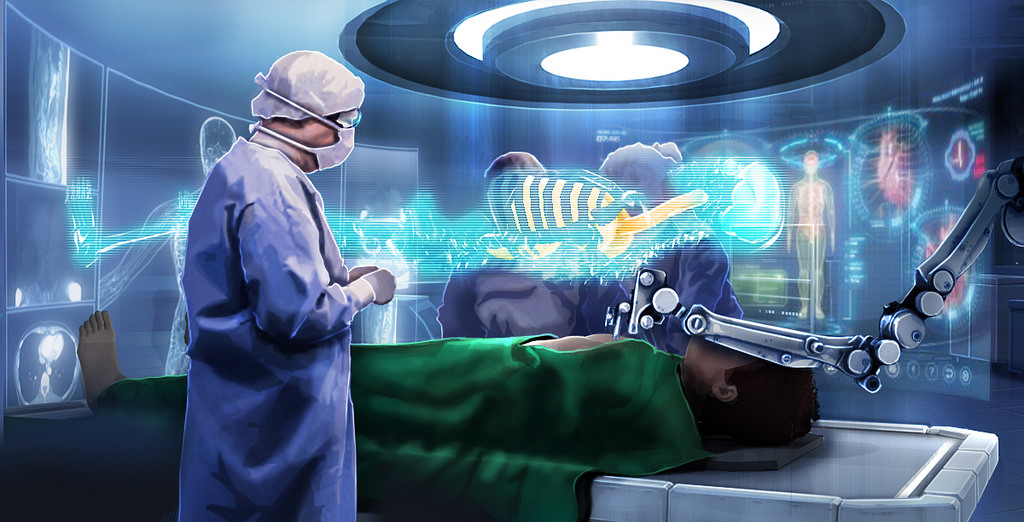 As technology continues to develop at a rapid rate, the healthcare industry finds itself on a parallel path of evolution and collaboration. The Cloud, improved online interaction, and 3D printing technology all offer patients the opportunity to improve their experience inside (and outside) the doctor’s office as well as explore alternative methods of ensuring that they receive the right kind of service for their needs.
As technology continues to develop at a rapid rate, the healthcare industry finds itself on a parallel path of evolution and collaboration. The Cloud, improved online interaction, and 3D printing technology all offer patients the opportunity to improve their experience inside (and outside) the doctor’s office as well as explore alternative methods of ensuring that they receive the right kind of service for their needs.
Doctors and nurses are also set to benefit from the rise of improved technologies, both in terms of inter-office communication and patient treatment. This article explores just a few of the ways through which the healthcare industry is set to grow in the coming future.
- Online Training
There are options, nowadays, for nurses and doctors in training to be certified (or recertified) in basic life support online. These options have received varied reactions from healthcare professionals as basic life support has changed, though it’s worth noting that many of these BLS online renewal programs require more than a few minutes in front of a computer. These programs frequently require online information processing partnered with an in-person skills test in order to ensure that the students or professionals seeking recertification have received the full benefits of their study.
It’s unlikely that online certification or classwork will ever replace clinical residencies performed by students or the education provided by established universities, but its availability makes it simpler for ambitious students or busy professionals to keep on top of their certifications.
- Face-to-Screen Interaction
Speaking of the busy, improved communication technology, based off of pre-existing forms such as Skype, Google Chat, and Iphone health monitoring apps, may soon enable some patients to visit the doctor without having to wait in the waiting room. Those individuals who are dealing with the common cold or who require physicals or the like may be able to receive diagnoses, be written prescriptions, and have their health monitored without having to leave their homes.
- 3D Printing
3D printers have taken the public by storm in recent years, and they now may enable the healthcare industry to better treat its patients. Doctors may soon be able to use 3D printers to improve the synthesis of prescription drugs, creating individualized doses of medication for various patients. This more specialized treatment will enable visiting patients to have their health addressed more appropriately.
Additionally, 3D printers may be used to create flexible splints to improve a patient’s blood flow, or certain, smaller bones for those who are born without them or who have broken them beyond repair. The materials used in 3D printers vary based on the printer’s structure, but 3D modeling has already been used in the creation of various healthcare-related bodily implants. Organic-friendly plastics or other such 3D printed materials may soon be in use throughout the healthcare industry.
- The Internet of Things and the Cloud
With the rise of the Internet of Things, or IoT, communication between machines and their users, as well as between the users themselves, has become exponentially easier. The IoT enables the status of the machinery within a hospital to be monitored from a singular source, thus ensuring that care and maintenance is improved. Likewise, data readings from heart monitors or doctoral inputs can all be stored on the hospital’s Cloud. Certain hospitals, like The Friesland Regional Cardiology Network in the Netherlands,use the IoT and this data sharing in order to maintain a patient’s data across several different facilities, thereby allowing that patient to receive excellent and prompt care that doesn’t require several different health care professionals to obtain the same information over and over again.
That isn’t to say that use of the IoT and the Cloud has been perfected – the healthcare industry is still experimenting with encryptions and security measures to combating malevolent hackers. However, as the industry evolves, the IoT and Cloud are likely to become as much staples in healthcare as stethoscopes.
Conclusion
The world has undergone dramatic technological transformation over the past decade, and it looks as though such transformations are soon to become common place. The healthcare industry has evolved in leaps and bounds alongside improving technology. The industry’s continued technological evolution offers plenty opportunity for more advanced research, increasingly personalized care, and new standards for the machinery brought into a healthcare environment. This is excellent news for patients and doctors alike, as improved technology means less time spent in waiting rooms or working with generic diagnoses and more time getting healthy.
Learn more about our annual ePharma conference taking place in New York City, March 21-23, 2018.

